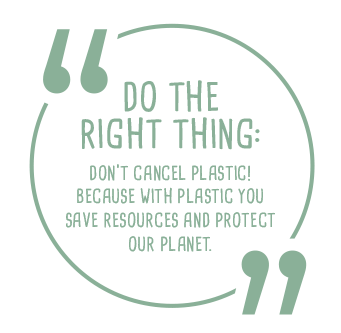
PLASTIC
SAVES
RESOURCES!



In the middle of the 19th century, pool balls were made from the ivory from elephant tusks. Pool gained popularity and countless elephants were killed for their ivory. An alternative had to be found to prevent the extinction of elephants and to make the sport available to the masses. Fortunately, this coincided with the birth hour of plastic!
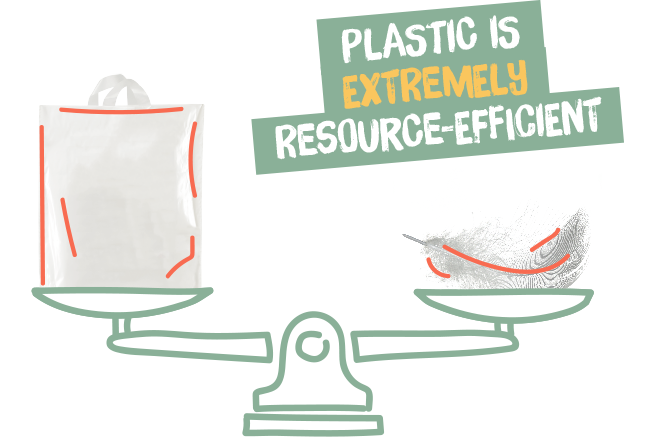
Especially plastic packaging is very light and therefore uses very few resources in the production process. There is no other packaging material that can protect so much product using so little resources.
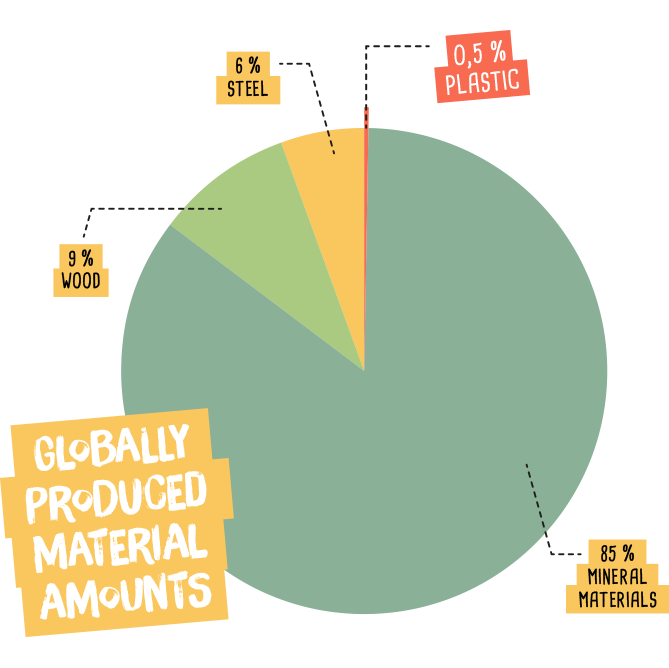
PLASTIC – THE
RESOURCE
FRIEND
Globally, we use 90 billion tons of material per year. Our use of plastic equals 370 million tons annually. This equates to plastic making up only 0.5% of the material used. Mineral materials (e.g. concrete, ceramics) are the most commonly used material making up 85% of the total consumption, followed by wood and steel.
HARDLY ANY FOSSIL
RESOURCES
ARE REQUIRED FOR
THE PRODUCTION OF PLASTIC
Did you know that the oil consumption for plastic packaging makes up only 1.4% of our total oil use globally? The major proportion of the raw material is used in the mobility and heat sector.
If we continue living like we are currently living, our oil reserves will last for about 50 years. In order to protect our oil supplies, we need more efficient heat and mobility solutions.
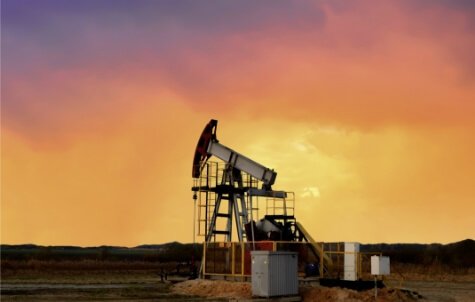


In comparison, a ban on plastic packaging has little to no effect on this development.
OIL AND PLASTIC
ARE LIKE AN
ORANGE AND ITS
SKIN
Currently, plastic is made from fossil resources such as oil for a good reason. During oil production, an indispensable byproduct is created: naphtha! Based on this byproduct, plastic is produced. So, naphtha can either be put to good use or go to waste.
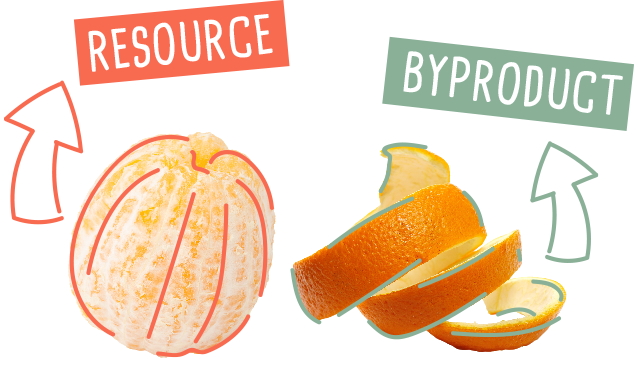
ARE THERE
MATERIALS THAT CAN
REPLACE PLASTIC?
Yes, but when you replace plastic with other materials like wood, glass or aluminum, you use 3 to 4 times as many resources.

When put into comparison, plastic is the most efficient material and it protects our resources.
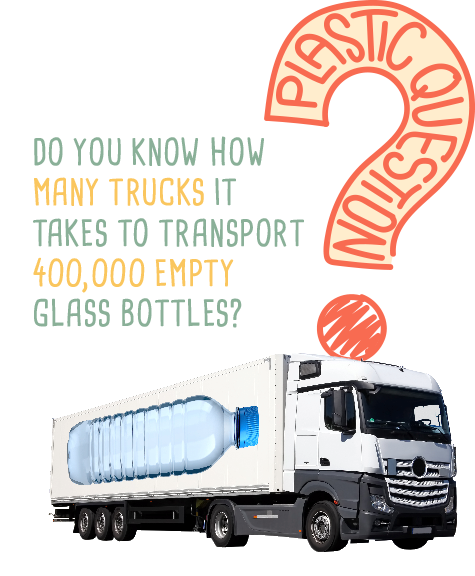
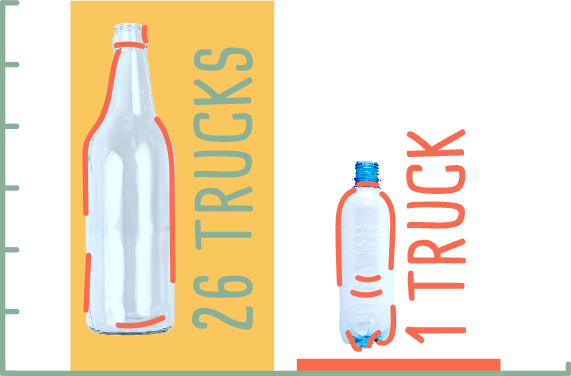
If you replace 400,000 1.5-liter PET plastic bottles with glass, you need 26 trucks for the transportation of the empty bottles
For 400,000 PET bottles you only need a single truck.

